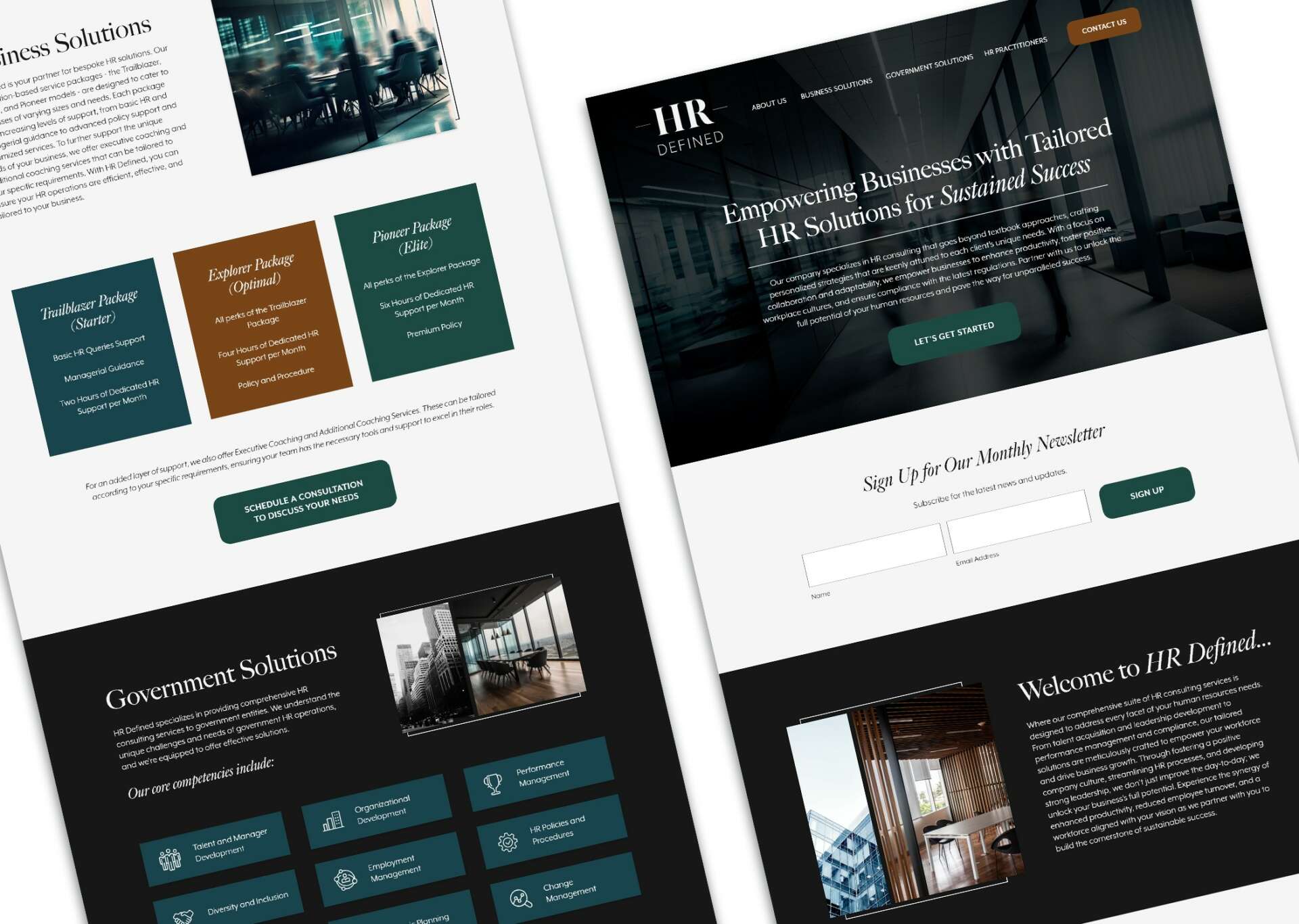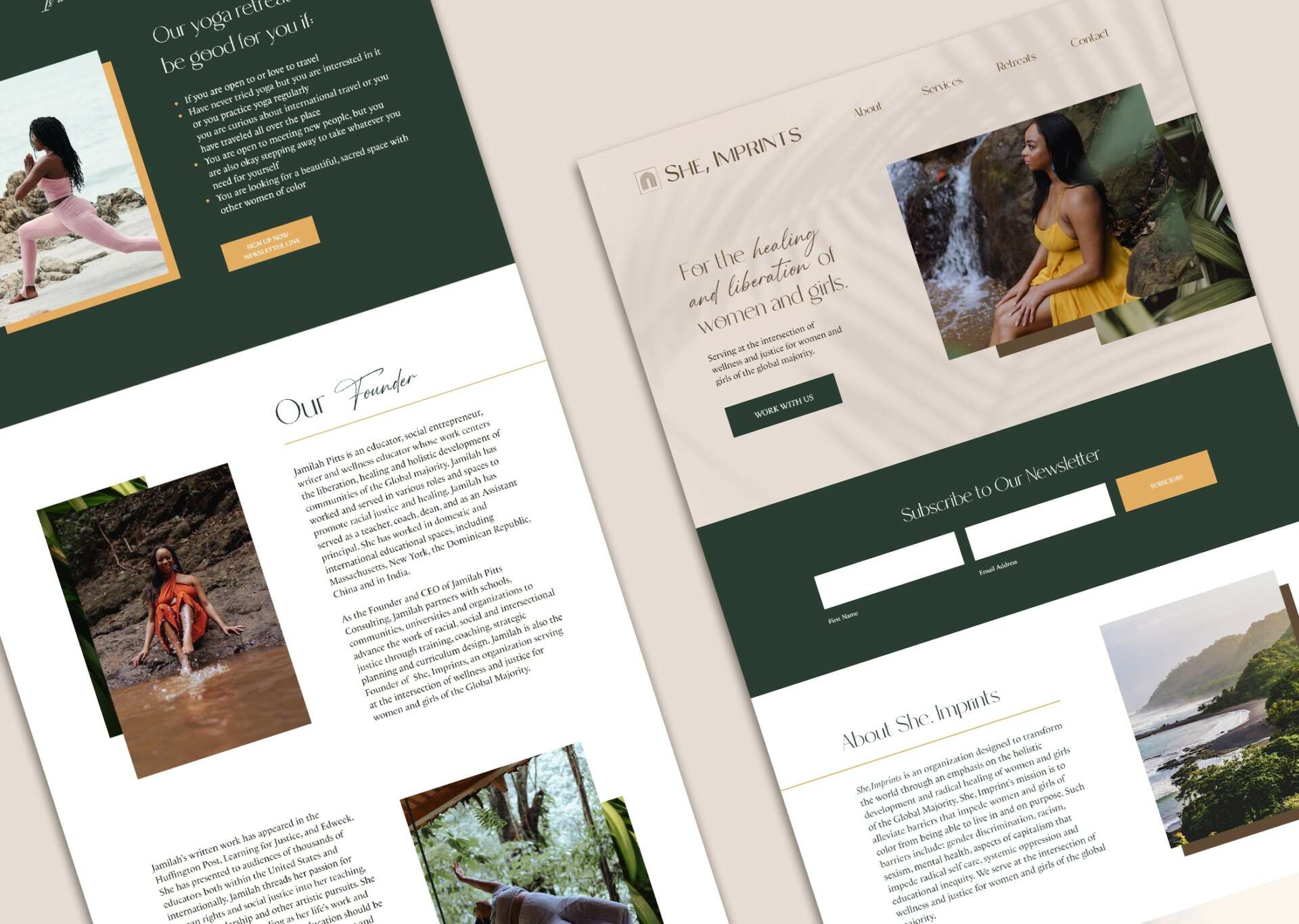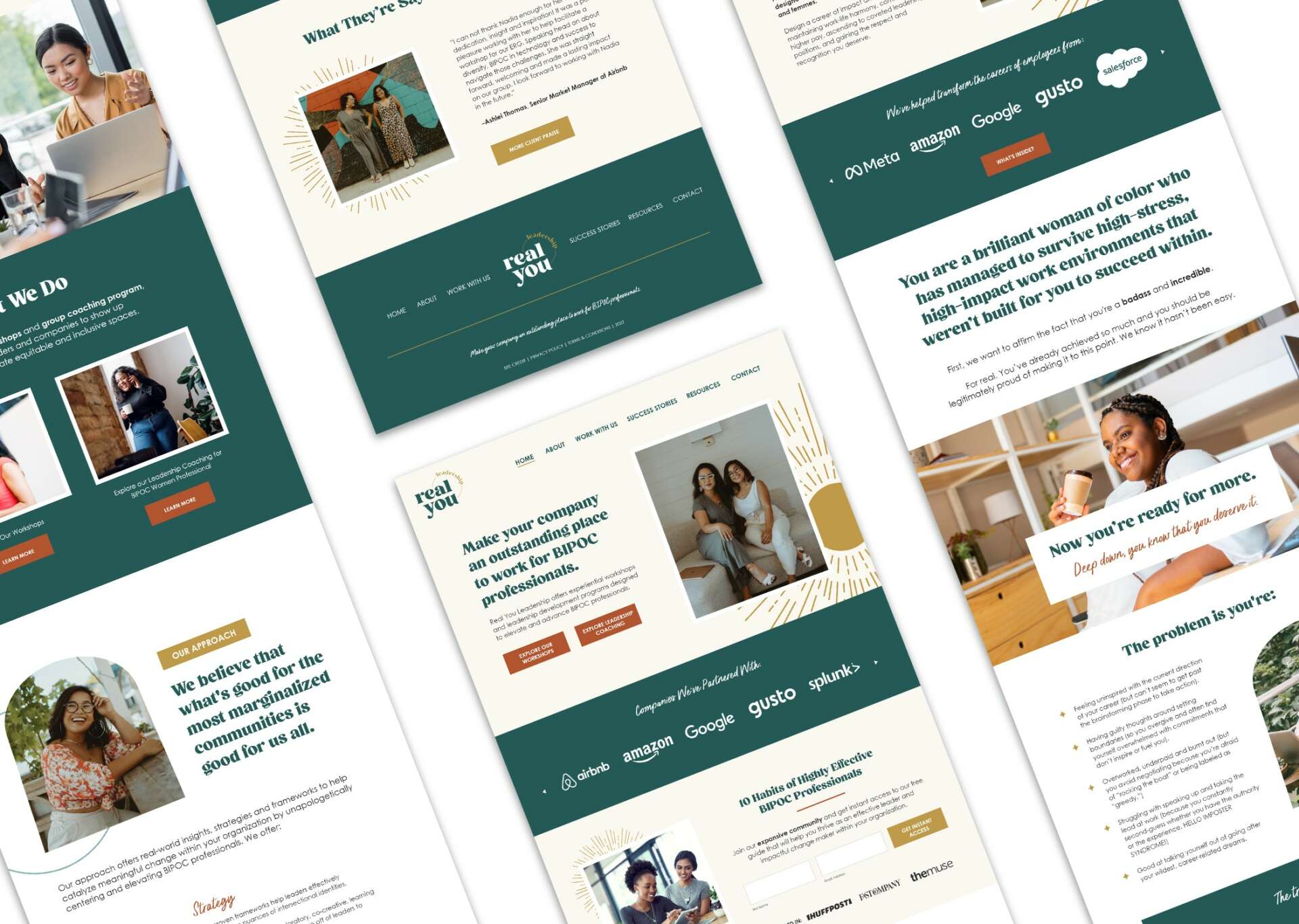We caught up with the brilliant and insightful Keshia White a few weeks ago and have shared our conversation below.
Keshia, appreciate you joining us today. So, let’s imagine that you were advising someone who wanted to start something similar to you and they asked you what you would do differently in the startup-process knowing what you know now. How would you respond?
When I was first starting out, I followed a lot of generic online business advice that didn’t serve me as a designer. And as a result, I wasted a lot of money on overpriced business coaching programs that I thought were going to be helpful for me, but they were more suitable for online coaches. And although I survived as a freelancer, I relied on working with solo business owners, who often had very small budgets for design, so I had to book a LOT of projects to stay afloat.
But now, I’ve realized that there are much more lucrative projects and opportunities available to freelance designers that come from other sources that aren’t social media and those companies have much larger budgets for design work, which would help me make more money as a freelancer without having to take on so much work.
These sources include larger marketing/design agencies, freelance job boards and recruiters who are searching for freelancers for projects, and networking within the marketing community in my area.
So if I was starting over, I’d make it a priority focus on those things to attract higher paying projects sooner than later. And I wouldn’t waste money investing in any generic business coaches who say they can help “all business owners” or “all service-based business owners” because there are many nuances in the design industry that don’t apply to other business owners and those generic coaches don’t know about it because they’re not designers.
I’d also be leery of coaching programs taught by young designers who have only worked with solo entrepreneurs as clients. The more seasoned older designers who have built real agencies where you can see proof that they’ve actually had household name brand clients and employees are the only ones I’d take advice from.


As always, we appreciate you sharing your insights and we’ve got a few more questions for you, but before we get to all of that can you take a minute to introduce yourself and give our readers some of your back background and context?
I’m a Freelance Web/UX Designer. I help companies create user-centered design that makes them stand out in their industries. I also offer brand identity design to help companies develop their brand style guides, including their brand colors, logos, and more. I’ve been a freelancer for the last five years and I’ve worked with nearly 100 clients now.
Prior to that, I worked in corporate sales for seven years. I went to Tuskegee University for Marketing, but I couldn’t land a job in marketing, so that’s how I ended up in sales. I hated working in sales and I knew my real strengths weren’t being utilized in those roles. But for a while, I had no idea what career I wanted to switch to. I had to keep exploring various hobbies and interests for years until I stumbled upon web design by starting a blog.
I started a lifestyle blog as a simple hobby on the side of my sales jobs and I enjoyed designing my website for the blog. I thought it’d be a great in demand skill to learn, plus I knew it was a skill that would allow me to work with people from anywhere.
So I took a web design certificate course at Kennesaw State University and a Visual Design course at General Assembly and both those programs helped me level up my skills. I then started slowly taking on freelance work on the side while still in corporate. And I made the leap to full time freelancing in September 2018.

How did you put together the initial capital you needed to start your business?
My overhead costs are relatively low as a designer, but once I decided to leave the corporate world, I still needed some startup money to keep me afloat, while I was working to get clients.
Working in software sales was my last job in the corporate world and that are paid very well with our commission checks. So I was strategic about how I used the extra money. I continued to live below my means while working in that job. And that allowed me to pay off credit card debt, pay off the loans from the design courses that I took, and I saved six months of expenses.
So if you can, I highly recommend taking advantage of a job that pays well and living below your means to pay off debts and save to support you in funding your business.

How do you keep in touch with clients and foster brand loyalty?
I check in with clients via email a few times a year. And for clients who are active on social media, I try to comment on their posts here and there to keep in touch that way too. I also provide a great client experience and I’m very good with communication and keeping clients in the loop on their projects and doing this helps foster brand loyalty too. Having a great client experience always makes people want to come back for more work or refer other people in their network to you.

Contact Info:
- Website: https://whitehousebrandingstudio.com
- Instagram: https://www.instagram.com/keshiamwhite
- Linkedin: https://www.linkedin.com/in/keshiamwhite
- Other: Behance: https://www.behance.net/keshiawhit9e1f
Image Credits
Photo of Me: https://www.smarchephotography.com


